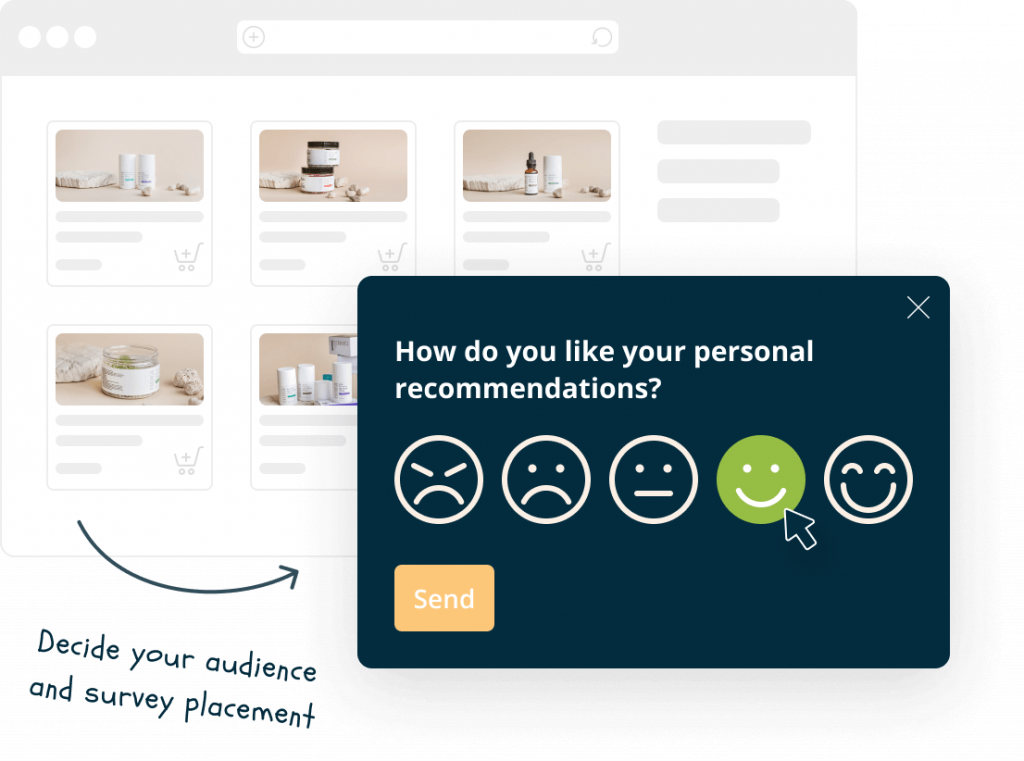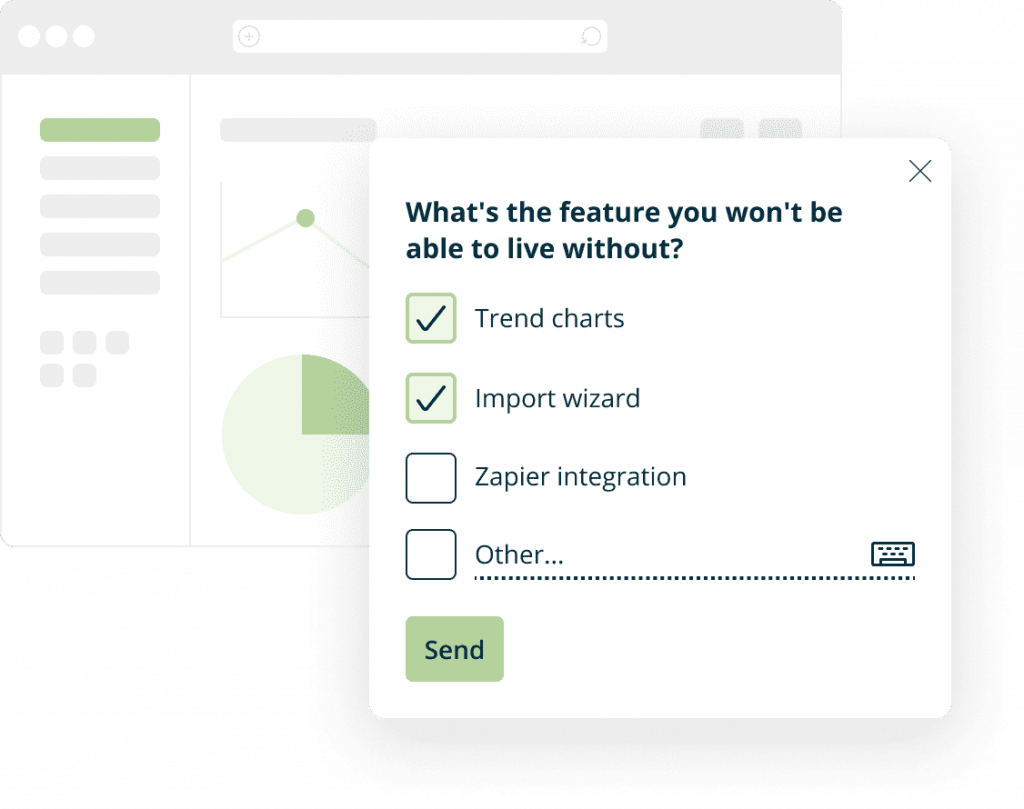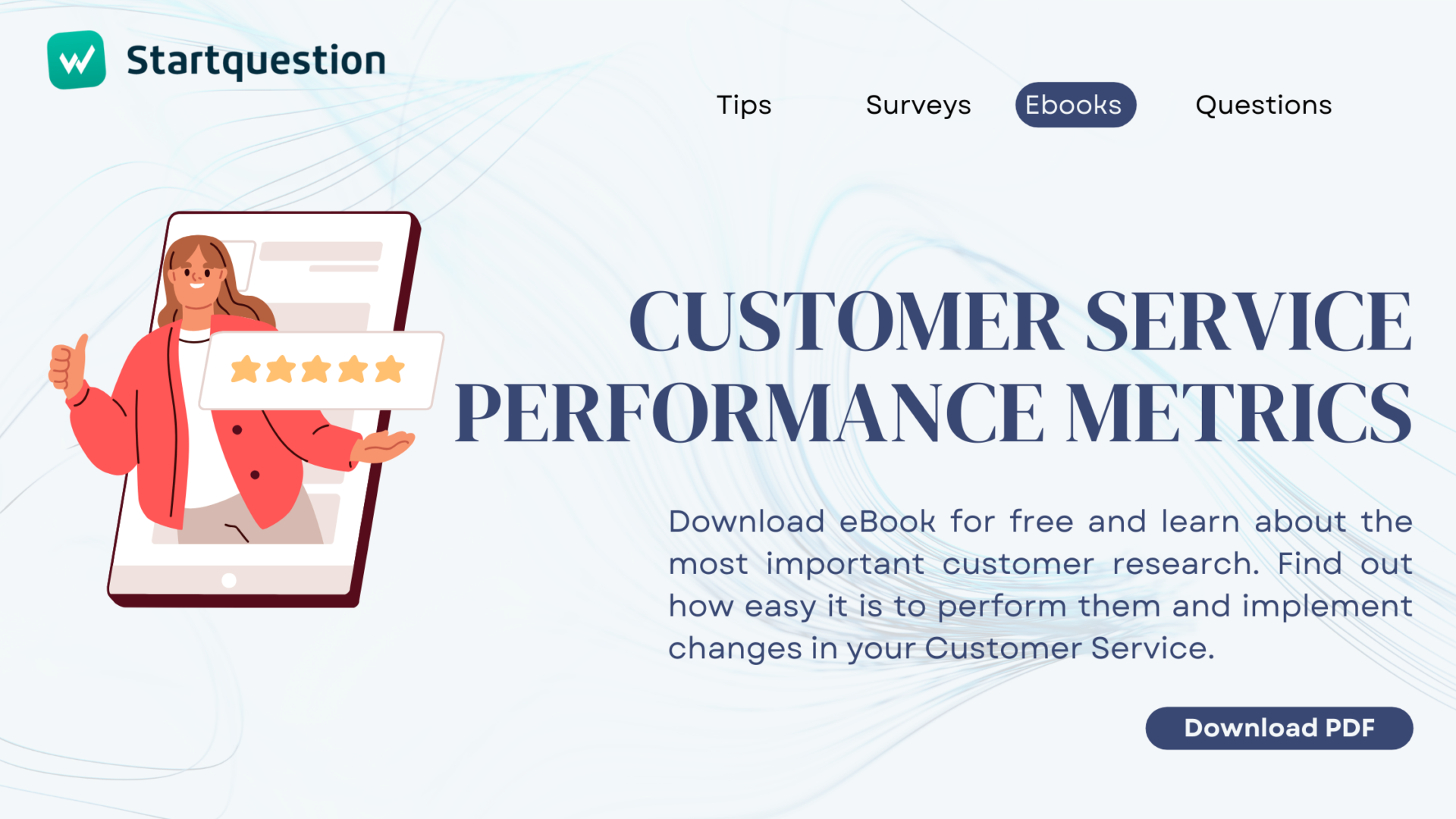Double-barreled questions may discourage not only respondents but also distort the survey results. Badly asked questions can destroy even the best questionnaires. How do you avoid them? And what mistakes are worth paying attention to when preparing the questionnaire? This article will give you the answers to these questions and provide you with double-barreled question examples.
What Are Double-Barreled Questions?
A double-barreled question, also known as a double-direct question, double-ended question, or compound question, occurs when the respondent cannot provide a clear answer at one point in the questionnaire. One (seemingly) question contains two issues, and it’s impossible to give a single answer to cover them.
Why are double-barreled questions problematic?
As you can imagine, it’s hard to receive accurate survey results from confused respondents. Suppose in one question we are to judge the color of the shoes and the comfort. Instead of two valuable answers, we will get an average rating, not saying much about survey respondents impressions.
For this reason, a compund question is often referred to as a confusing or biased question. Even if survey creators are well-intentioned (e.g., they want to reduce the number of questions to make surveys shorter), their effects are far from expectations. As a result, we may make unwise business decisions based on poorly worded questions.
Try one of the best online survey tools for free!
Start trial period without any credit card or subscription and easily gather impactful feedback via link, social media, email, and more.
No credit card required · Cancel any time · GDRP Compilant
Double-Barreled Questions Examples
We already know that adding in a survey double-barreled questions returns unreliable results. Now let’s see how asking about two different issues at the same time looks in practice. Below you will find some examples of such questions.
How Would You Rate the Features of Our Software and Customer Support?
I bet you already know what’s wrong with this survey question. There are two questions, first about software’s features and another about customer support. Such a double-direct question makes it impossible to provide a particular answer.
How Do You Rate the Conditions of Remote Work and Cooperation with Your Manager?
The Covid-19 pandemic has delegated many of us to work remotely. The remote work environment (equipment, internet, desk, comfortable chair) is entirely different from the performance of a manager managing remote work. It is good that companies want to study the mood of employees outside the company. However, you have to be careful not to fall into the trap & identify double-barreled question before submitting the questionnaire.
How Much Do You Enjoy Collecting and Analyzing Data in Startquestion?
You can see with the naked eye that it would be better to ask separate questions instead of just one, right? It’s impossible to provide one answer to such a question. Collecting feedback from survey respondents and data analysis are separate steps in organizing and managing information. Asking two separate questions will give you more meaningful and helpful answers about each step in the process.
How Often Do You Eat Vegetables and How Much Time Do You Exercise Each Week?
Healthy lifestyle surveys are prevalent. It is a good source of actionable data about eating habits, diets, and attitudes towards sports. Avoiding double-barreled questions (double check) can help you get precise results. Not everyone who follows a diet goes in for sports. Separated questions about eating habits and exercise will be the correct solution in this case.
How Do You Rate the Career Path in the Company and the Pay Rise Policy?
I bet you have seen plenty of questions crafted in the same manner. For accurate results, there should be no single answer options or two separate questions — the first about the career path and the other about the pay rise policy.

Make each survey question plain and simple.
Other Types of Questions to Avoid
We’ve gone through examples of double-barreled questions. There are several different types of questions to avoid in surveys. Here they are.
Leading Questions
Have you ever felt that the questionnaire’s author suggested an answer? If so, you are familiar with a leading question. Carefully examining such a question, we find that it contains unnatural language, adjectives, or explicit praise.
Take a look at two leading questions examples: “Startquestion is a great survey software. How likely is it that you would recommend it to a friend or colleague?”. Or “Nicole Kidman is likely to win an Oscar for this role. How do you rate her performance?”. Asking a leading question may be tempting, but it’s never a good idea. Stay professional with your surveys.
Ambiguous Questions
Good survey questions are simple ones. Precise and understandable for the respondents. Their opposite is ambiguous questions. They are like puzzles, not specific, and the choice of vocabulary leaves room for different interpretations. It is a mistake. Here is an example of an ambiguous question: “Have you seen a movie in the past three months?”. I guess so. Or a puzzle one: “If Michael Jordan plays his friend basketball and he’s an NBA star, is he likely to win?”.
We must avoid biased language and broad questions and build surveys precisely if we care about reliable results. Otherwise, gathered feedback wouldn’t provide you with valuable data.
Assumptive Questions
Sometimes the survey creators assume that the respondent knows the topic well. They do not ask questions that would verify the level of knowledge or skills in this area but goes straight to the point. Here’s an example of an assumptive question: “When you play basketball, what’s your favorite position?”. You may provide answer options (guard, forward, center), but they will tell the respondents nothing if they are not interested in basketball.
In such cases, we suggest the following solution: Ask the question “Do you play basketball,” then display to respondents who answered yes question about favorite position.
Double Negative Questions
Do not make the job difficult for the respondents. Do you like to think about the content of the task instead of immediately starting to solve it? Hardly anyone wants it.
The same applies to survey questions. Double negation makes the content of the question confusing. Here’s an example: “What are the most negative features of our software you don’t like the most?”. Hard to understand, right? It’s easier to ask: “What are the cons of the software’s features?”.

Never suggest a desired answer.
Avoid This When Creating a Survey
The double-barreled question makes it sometimes impossible to gather valuable feedback. As a result, you may make poor business decisions based on flawed assumptions. It sounds rather costly or at least time-consuming.
Risks related to compound questions also apply to ambiguous, leading, assumptive, or double negative questions. How do we minimize them? We have prepared some proven tips for you on how to create a perfect survey.
What Every Survey Creator Should Keep in Mind
Here’s a short list of six popular mistakes one should avoid while developing survey questions for a professional questionnaire.
1. Avoid too general surveys
Each good survey has a clearly defined purpose. Before asking questions, think about who, what, and why you want to ask. The better you choose your target group and research method; the better your results will be.
2. Avoid poor question selection
The problem with double-barreled questions is that you are not giving the respondent a chance to provide a satisfactory answer. It is essential in research how you ask questions. Consider the choice of formats carefully. Sometimes an open question is better, sometimes a closed question, sometimes a matrix or NPS question.
3. Avoid too dificult questions
Each survey question must be understandable to the respondent. If a question seems too complicated, make it as simple as possible. If unsure that you are correct in the questionnaire, take the test. Before you send it to your target audience, ask a group of friends or acquaintances to fill out the form and give honest feedback.
4. Avoid suggesting the answers
Think about why the respondent answers affirmatively (or not) your questions? Could the answer have been influenced by the tone of the question asked? If so, edit it and remove any words that might indicate the answer. Leave emotions (positive or negative) to the respondents; you must be objective and professional in the questionnaire. Don’t ask leading questions.
5. Avoid asking with no reason
Nobody likes to waste their time. Ask only those questions that are necessary for the survey results. Thanks to this, the questionnaire will be consistent and quick to complete, and you will not scare the respondent by asking him questions unrelated to the study.
6. Avoid a mess in your survey
A good survey creator cares about the logic of the questionnaire. The order in which the questions are asked is essential as it guides the respondent through the reasoning of the research author. It also allows you to display questions relevant to a specific audience. Remember the question about your favorite basketball position? In the logical form, we will show them only to those respondents who admitted they like to play basketball.
There are more mistakes to avoid in creating a unique questionnaire. Look at our blog article for further guidelines regarding setting up a survey.
NPS Survey Template
The Net Promoter Score (NPS) is a world-renowned methodology of researching client loyalty. You will draw remarkably valuable conclusions from this simple and effective feedback.
Double-Barreled Questions in a Survey – Sum Up
Sometimes we want to cover too much content in one question. Instead of two questions, we ask one. We think that it is brilliant, and it only makes it difficult for respondents and those responsible for interpreting the survey results.
You may simplify each compound question. Two questions asked separately will benefit you more. Remember that the better the respondent’s experience, the greater the chance of getting impactful results and a high response rate.
And this is the basis for drawing the correct conclusions from each study.










